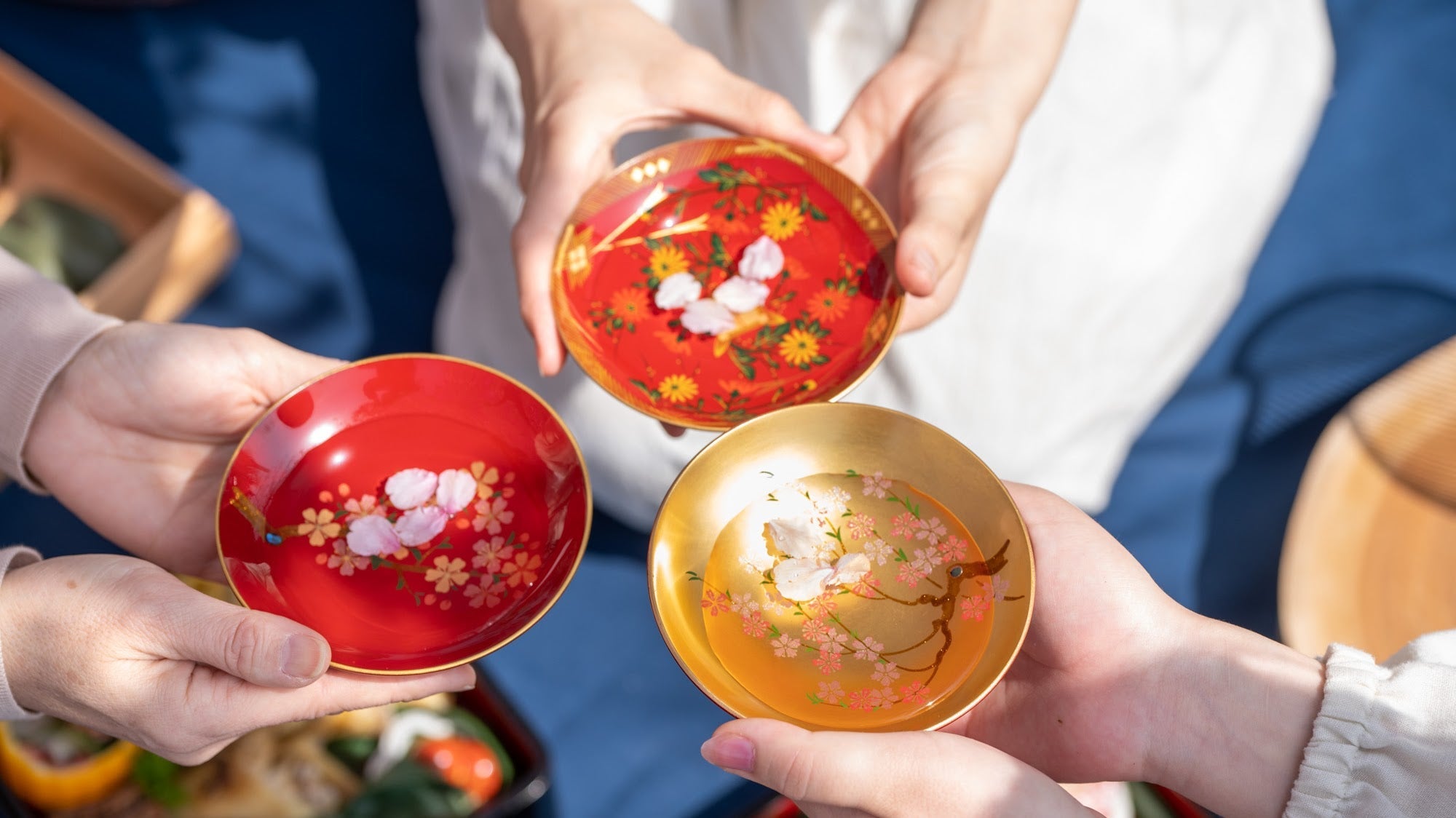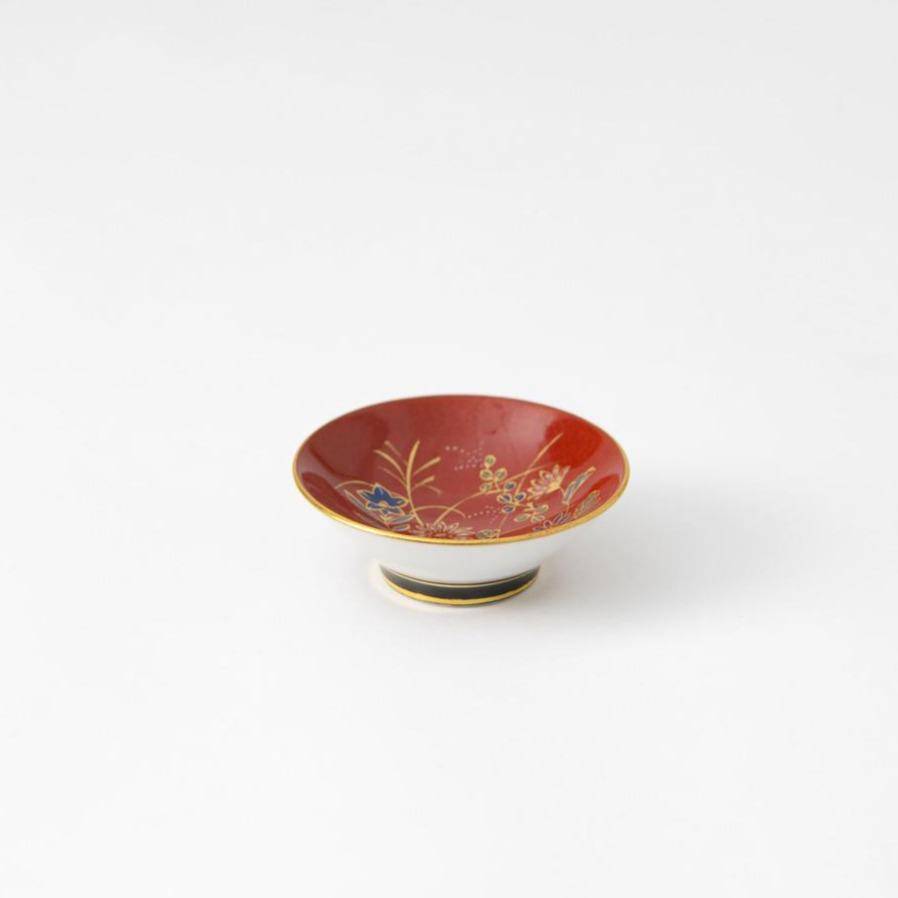
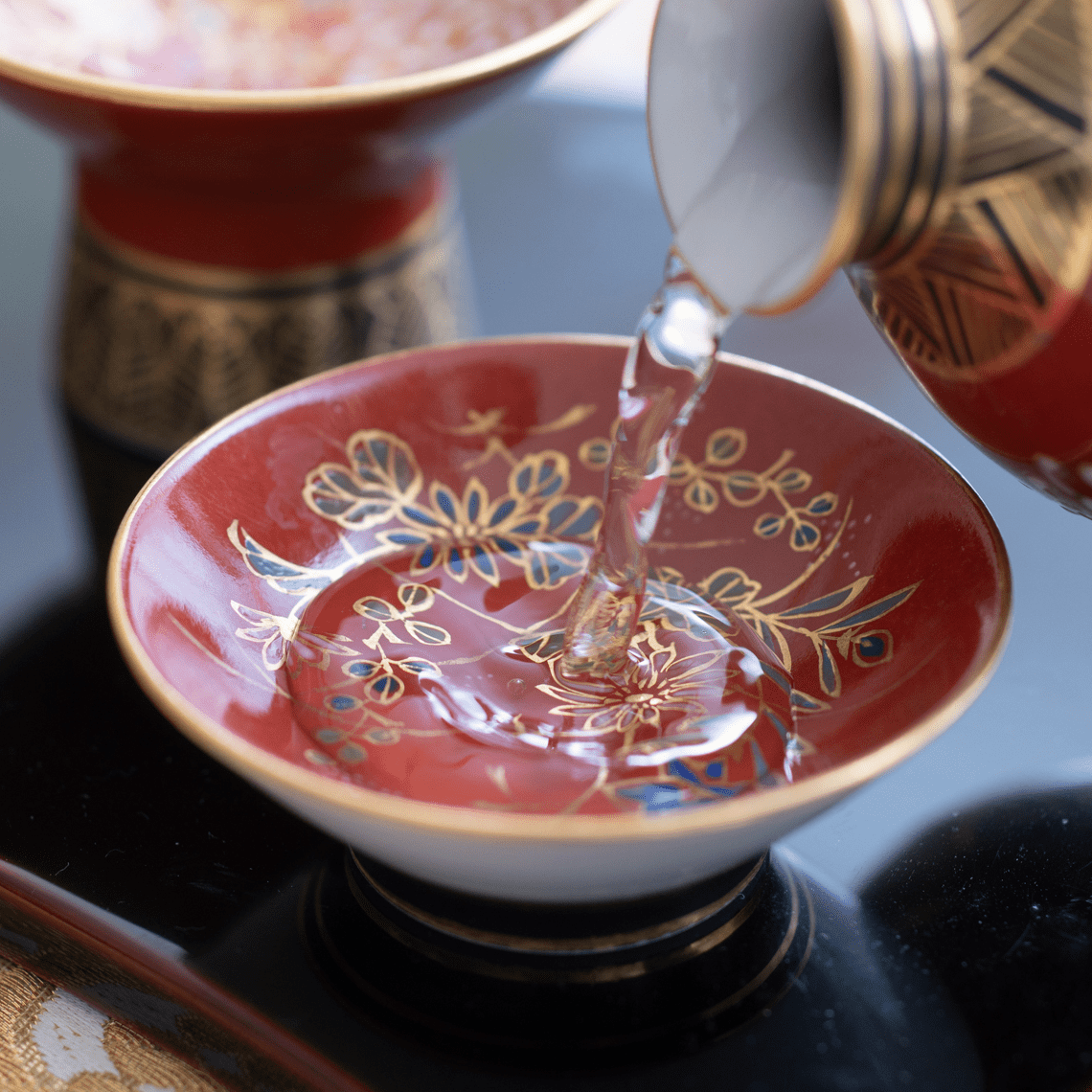

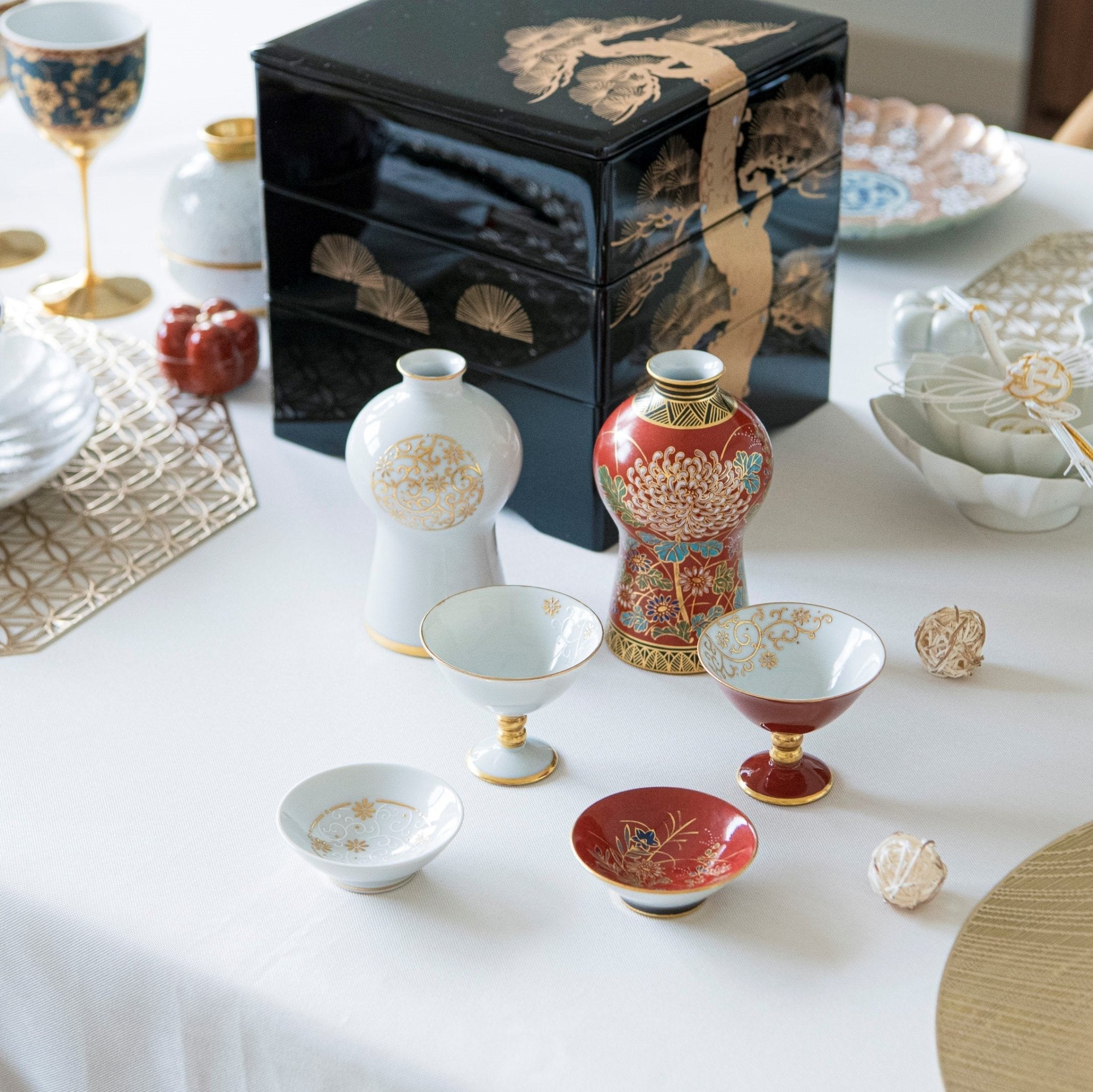
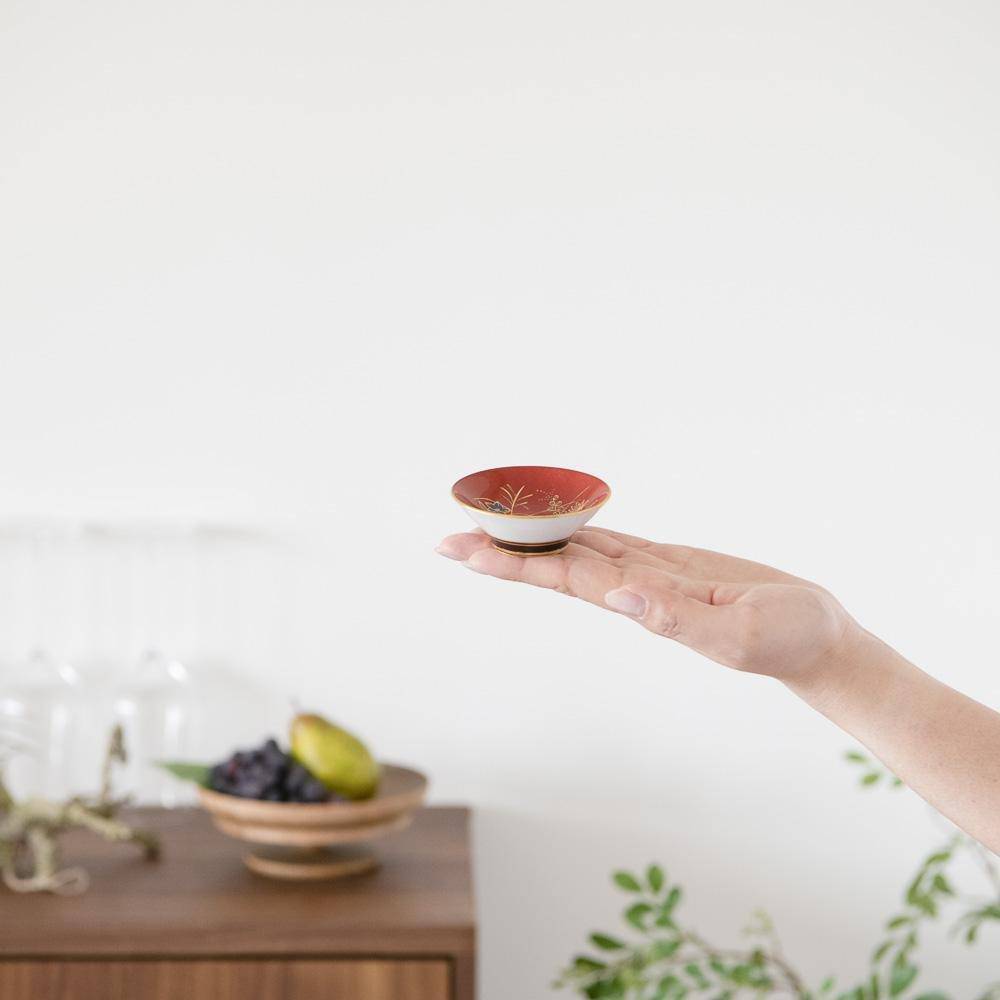
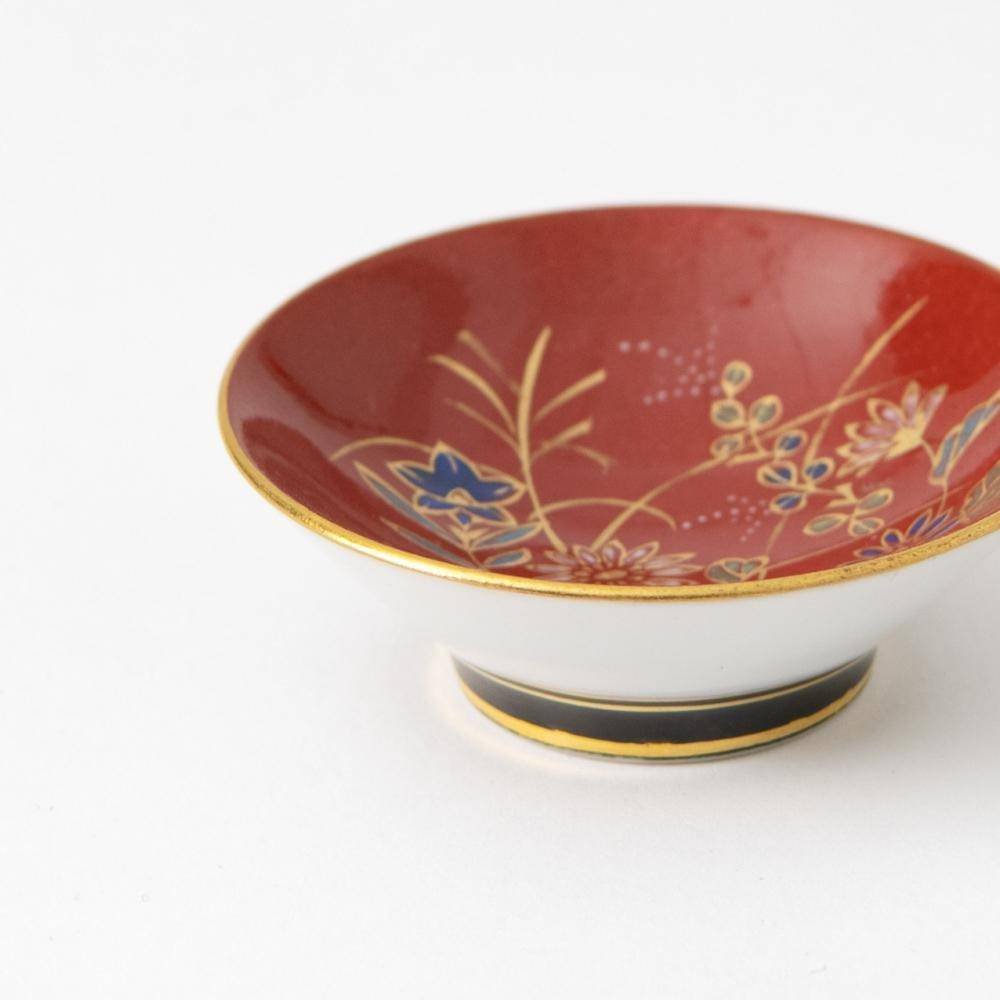
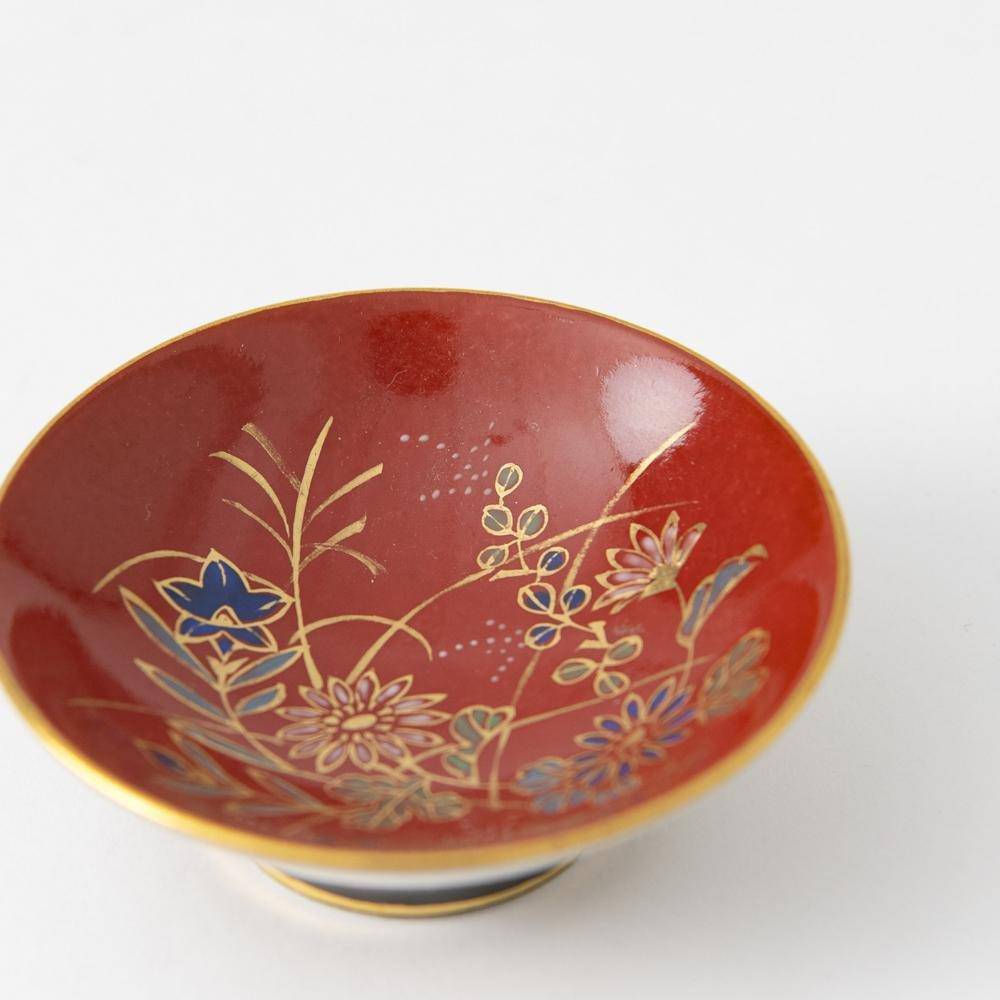
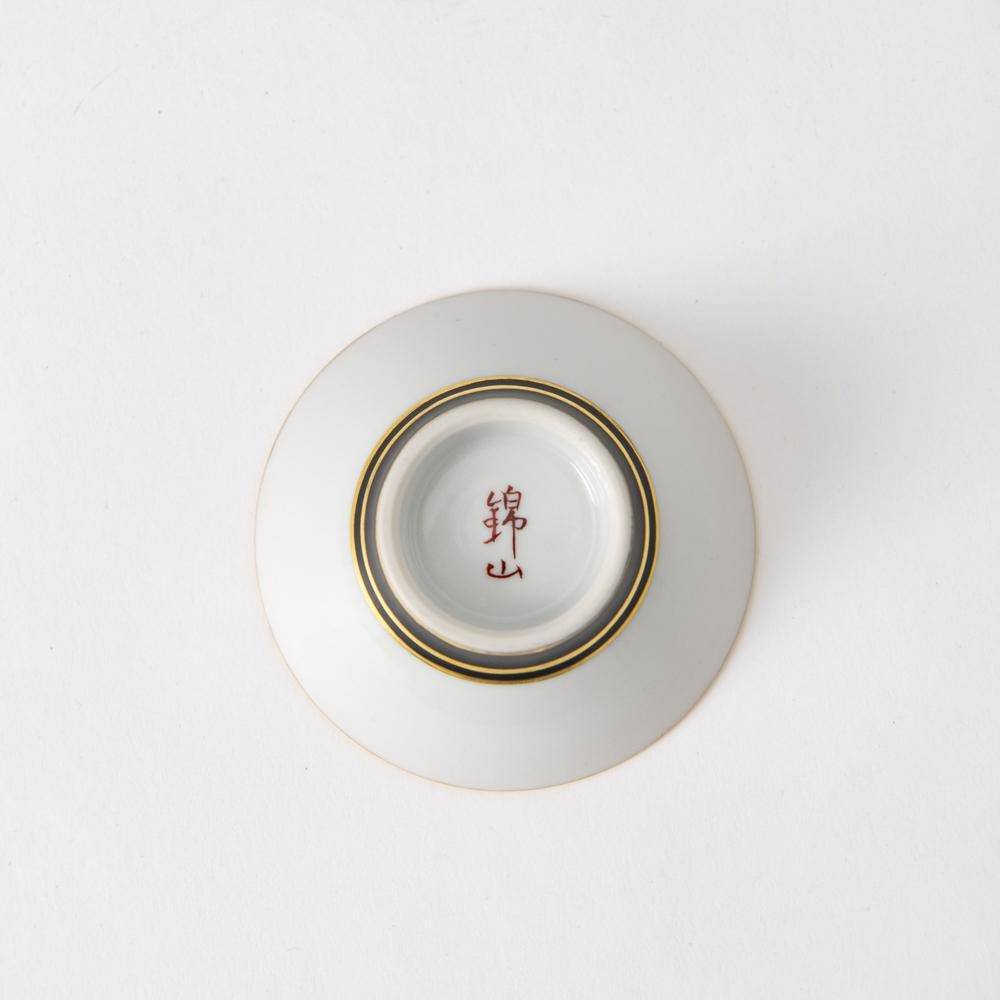
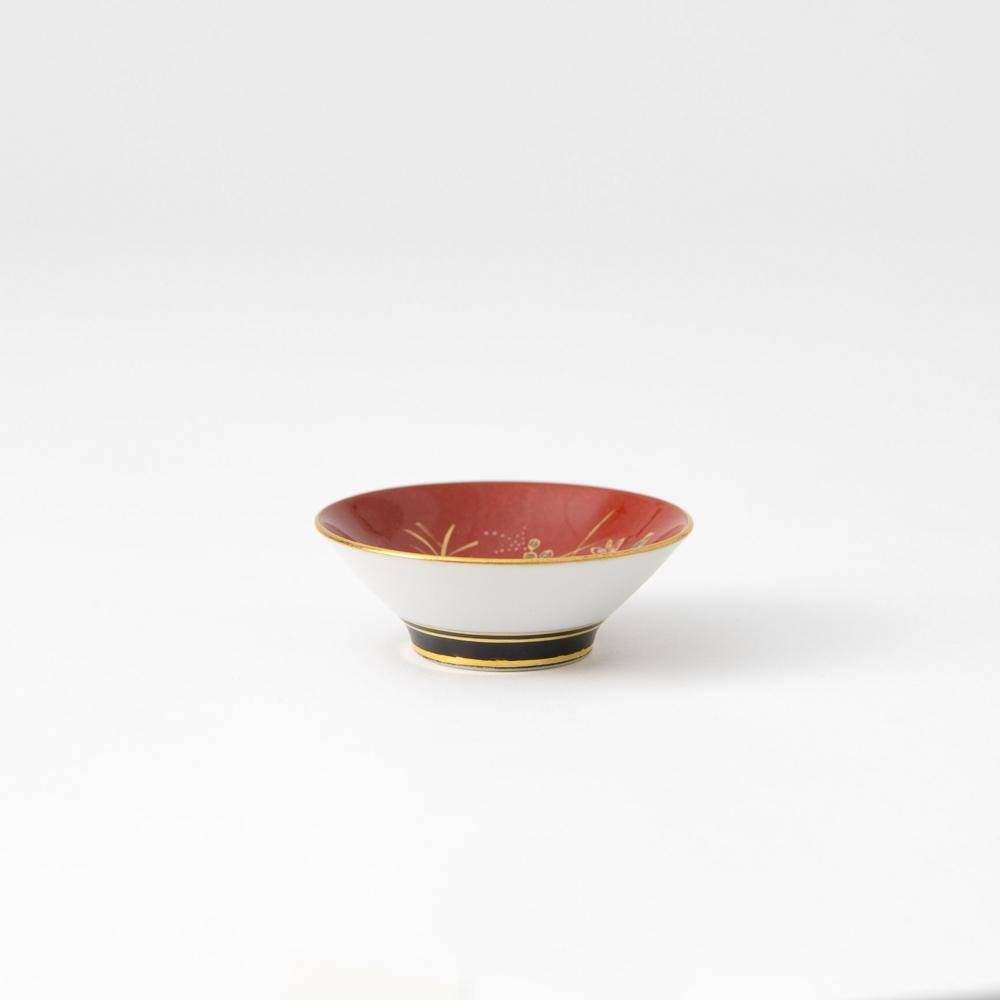
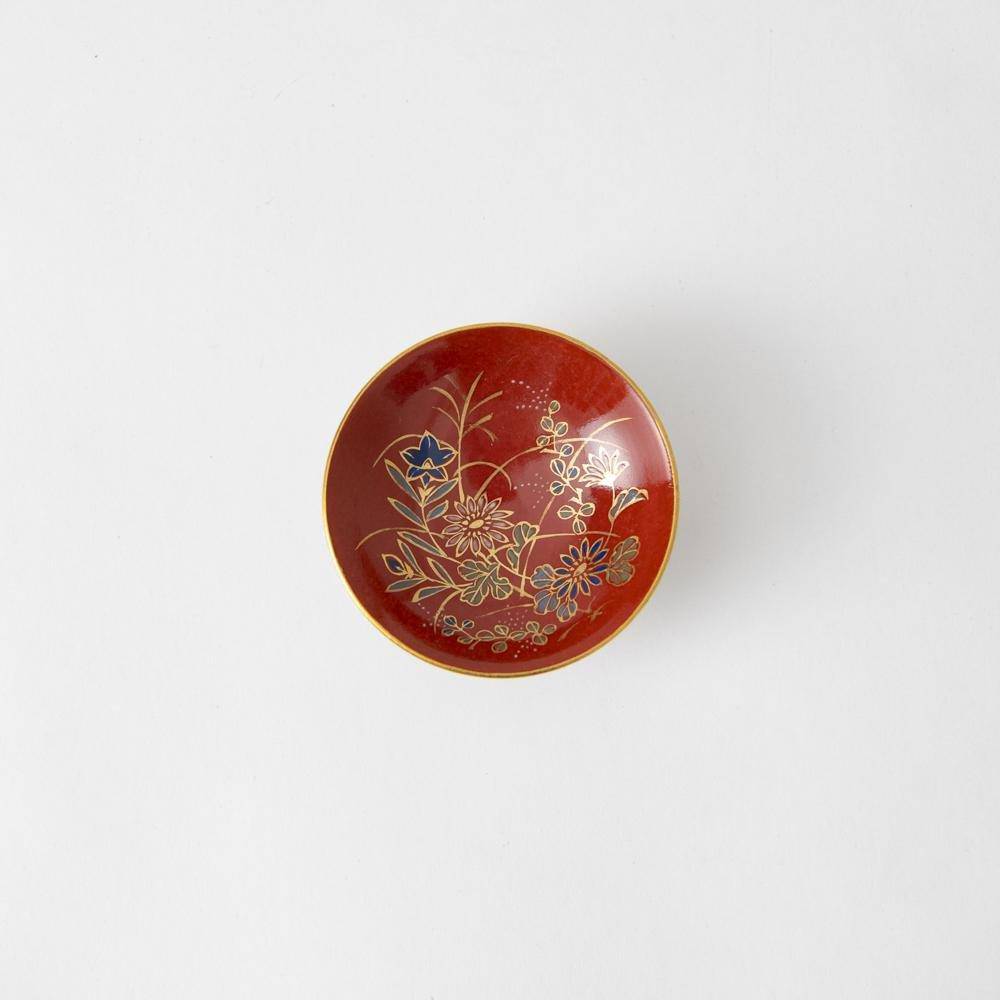
Red Gilded Sakazuki Flat Sake Cup
Estimated Shipping Widget will be displayed here!
This Japanese flat sake cup features a simple and strong shape decorated with elegant patterns using gold. This "Shugu" series, created by focusing on the modern and sophisticated shape and pattern derived from the old Kinzan kiln's collections and techniques, has an elegant and timeless charm.
In Japan, the color red is often reminding us of something congratulatory. This elegant and classy piece is perfect for special occasions and also for any special gift.
DETAILS
| Quantity | 1 Sake Cup |
| Size | 7 cm (2.75 in) x H 2.5 cm (0.98 in) |
| Capacity | 15 ml (0.5 fl oz) |
| Material | Porcelain |
| Microwave | No |
| Dishwasher | No |
Maker / Brand
Kinzan kiln was established in 1906 and has continued to produce Kutani ware for about 110 years. Among the traditional techniques of Kutani ware, the Kiln especially excels in Kinsai, glaze painting with gold. In addition to the traditional techniques and innovative trials by artists, Kinzan kiln continues to create a new world of colorful Kutani ware by exploring various techniques and materials.
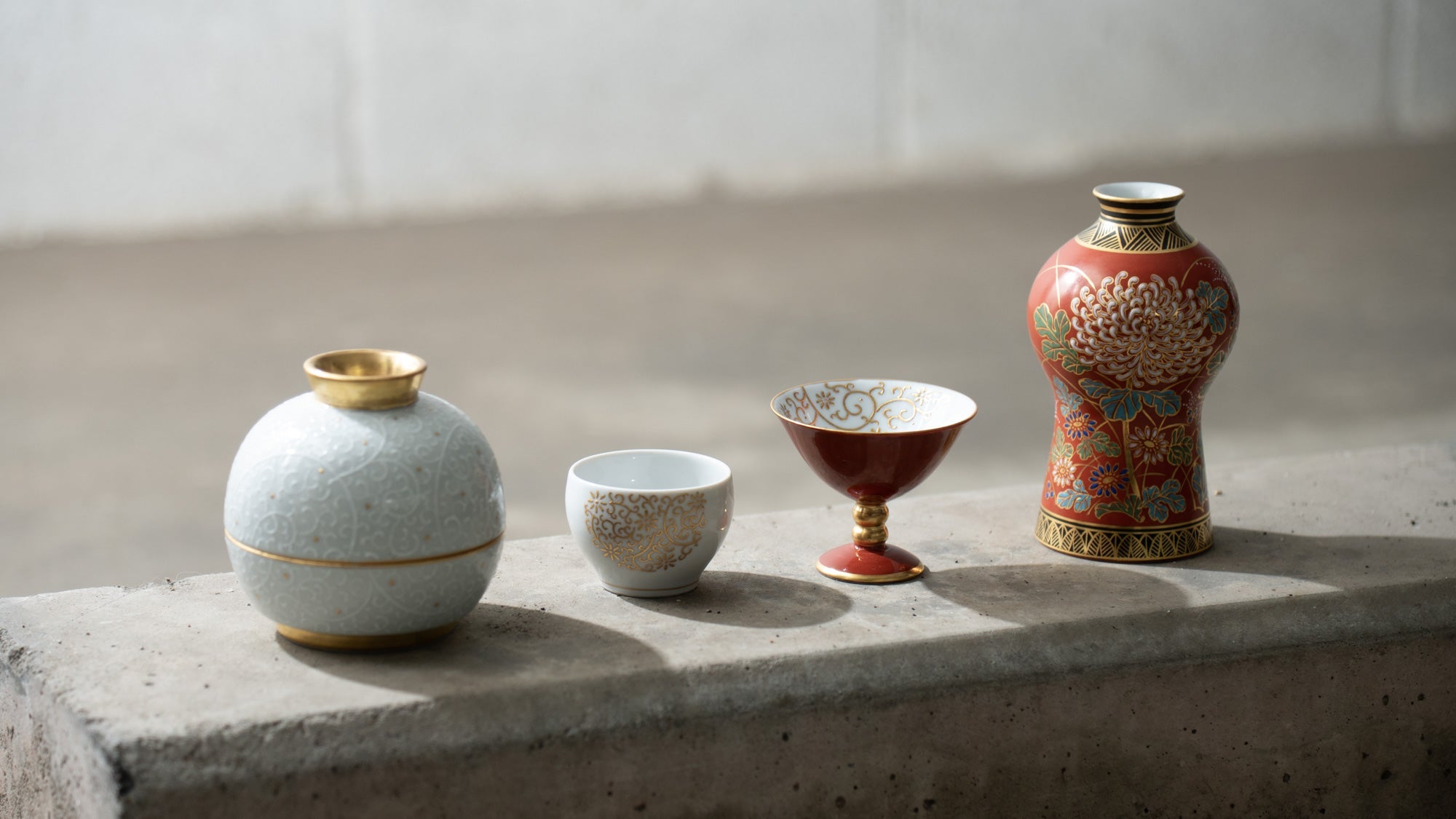
Crafts
Kutani ware is a pottery produced in the Kaga region of Ishikawa Prefecture, with a history spanning over 350 years. It is characterized by the heavy brilliance of the five colors of navy blue, red, purple, green, and yellow that are applied to the bold and daring lines. Its long history has evolved through the tireless efforts and enthusiasm of people who have sought innovation while maintaining tradition.
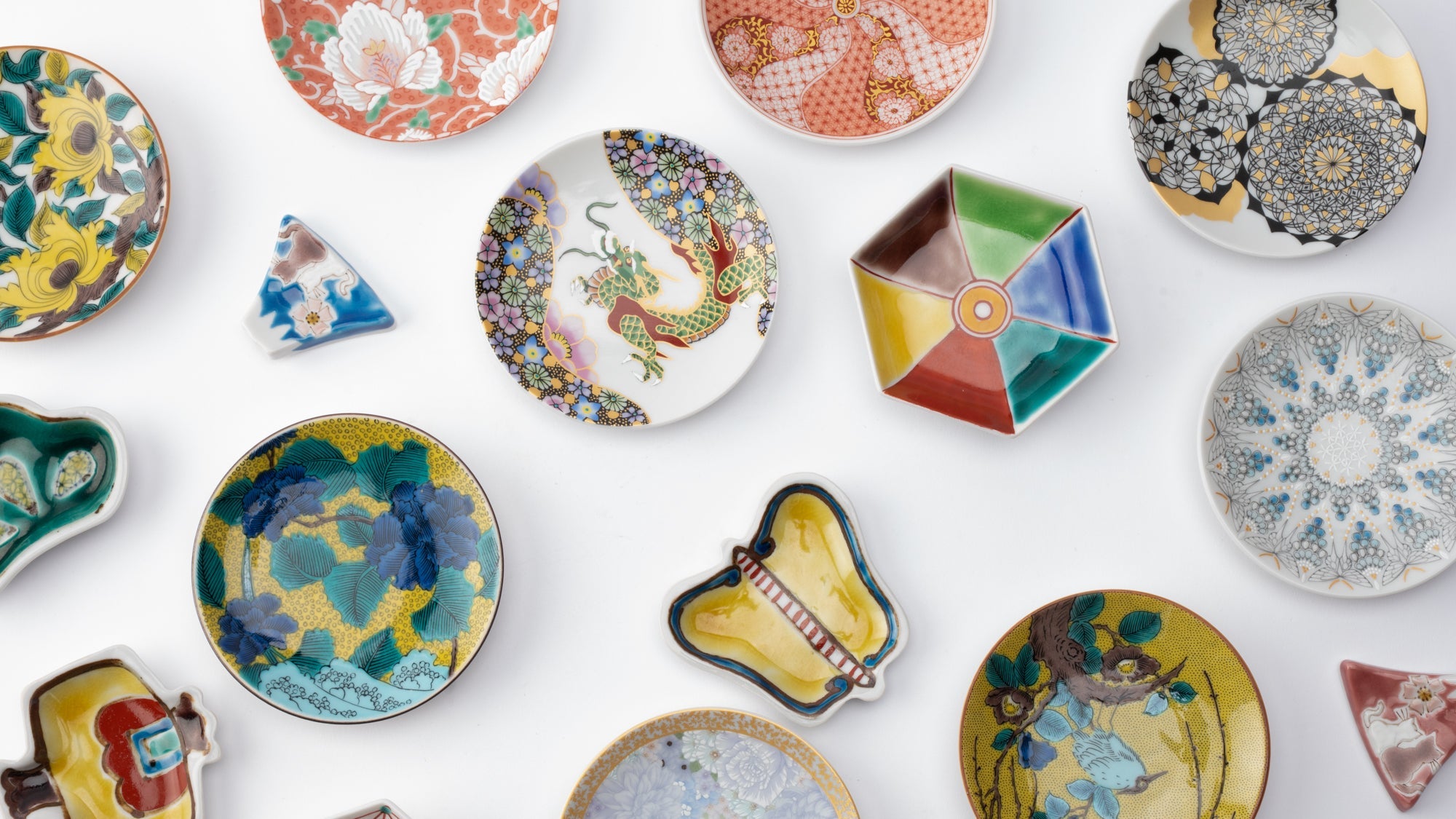
Choose options










Estimated Shipping Widget will be displayed here!
Sake Cups
Explore a refined selection of sake cups crafted by Japan's skilled artisans. From traditional ochoko to modern designs, each piece reflects the artistry and heritage of Japanese craftsmanship. Perfect for both quiet moments and celebratory toasts, these cups bring elegance to your sake experience.
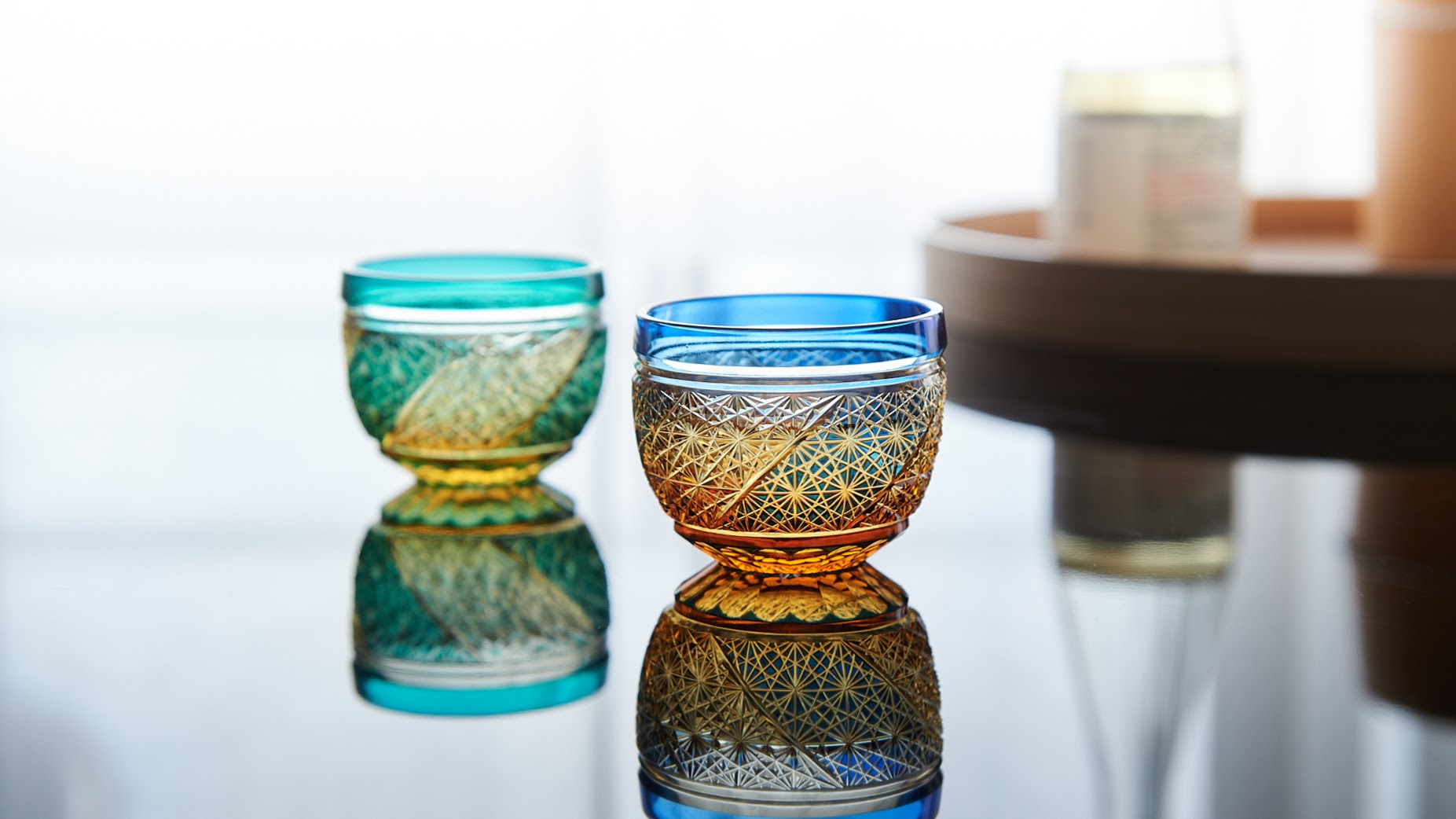
Sakazuki
We have curated a collection of exquisite sakazuki sake cups from all over Japan, designed to enrich the blissful experience of savoring your favorite sake. The term "sakazuki" refers to any sake cup, though it traditionally describes a flat, plate-like vessel, representing the oldest style. Holding the cup delicately with both hands—grasping its sides and bottom—embodies the essence of Japanese sake culture.
Sakazuki cups typically contain just a few sips, and the beautifully adorned ones are treasured by collectors for their aesthetic appeal. Using a stunning sakazuki for a special sake, a celebratory occasion, or when hosting guests, will create an unforgettable moment.
